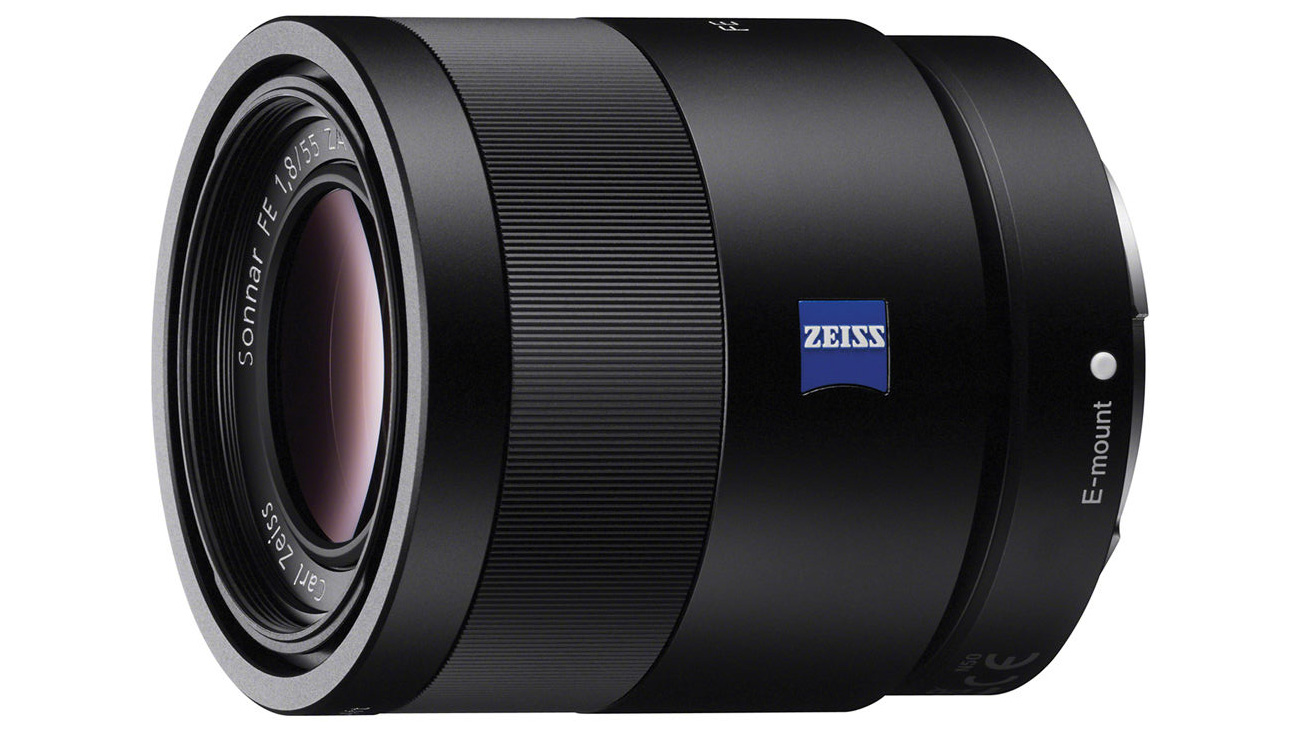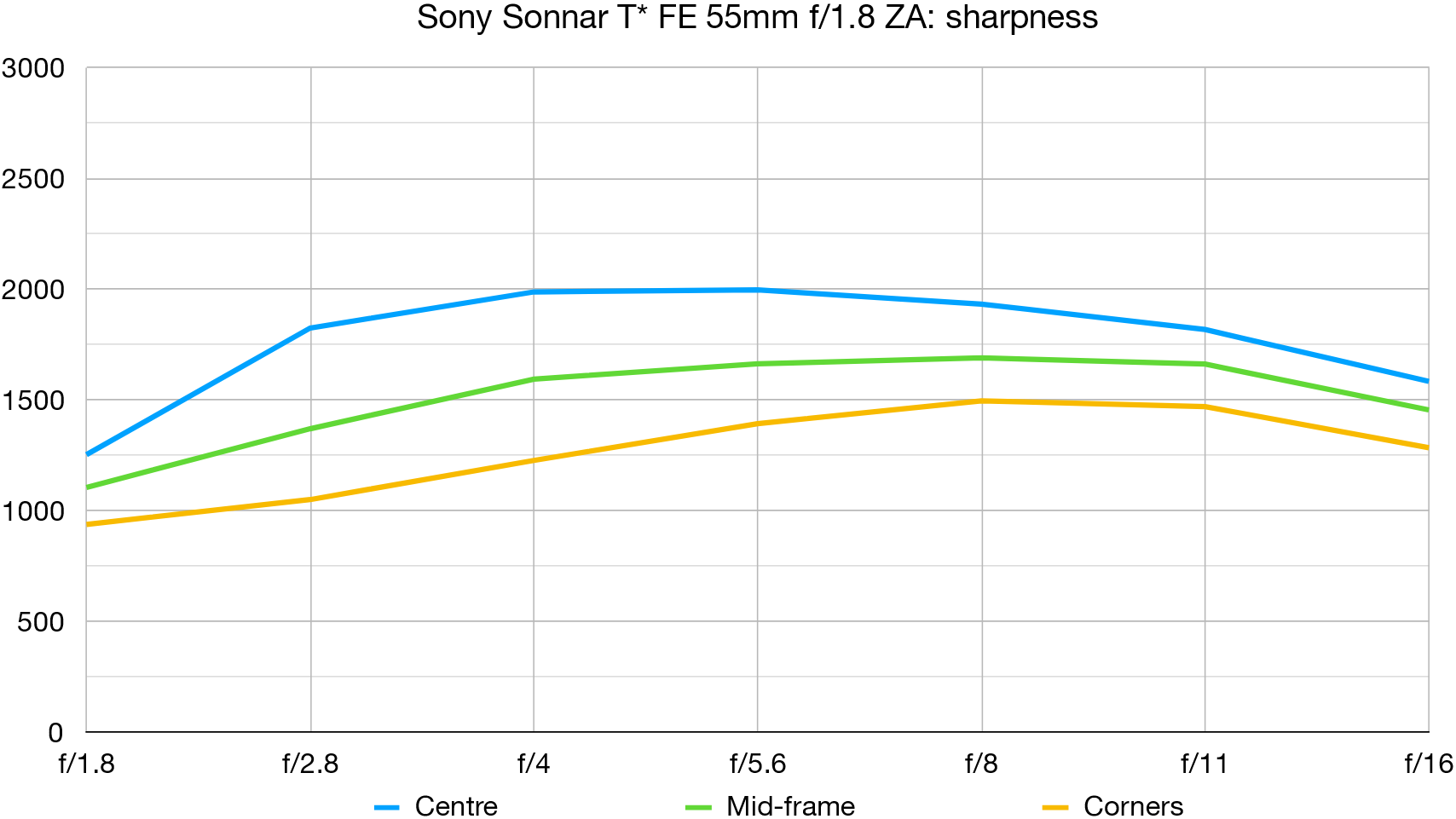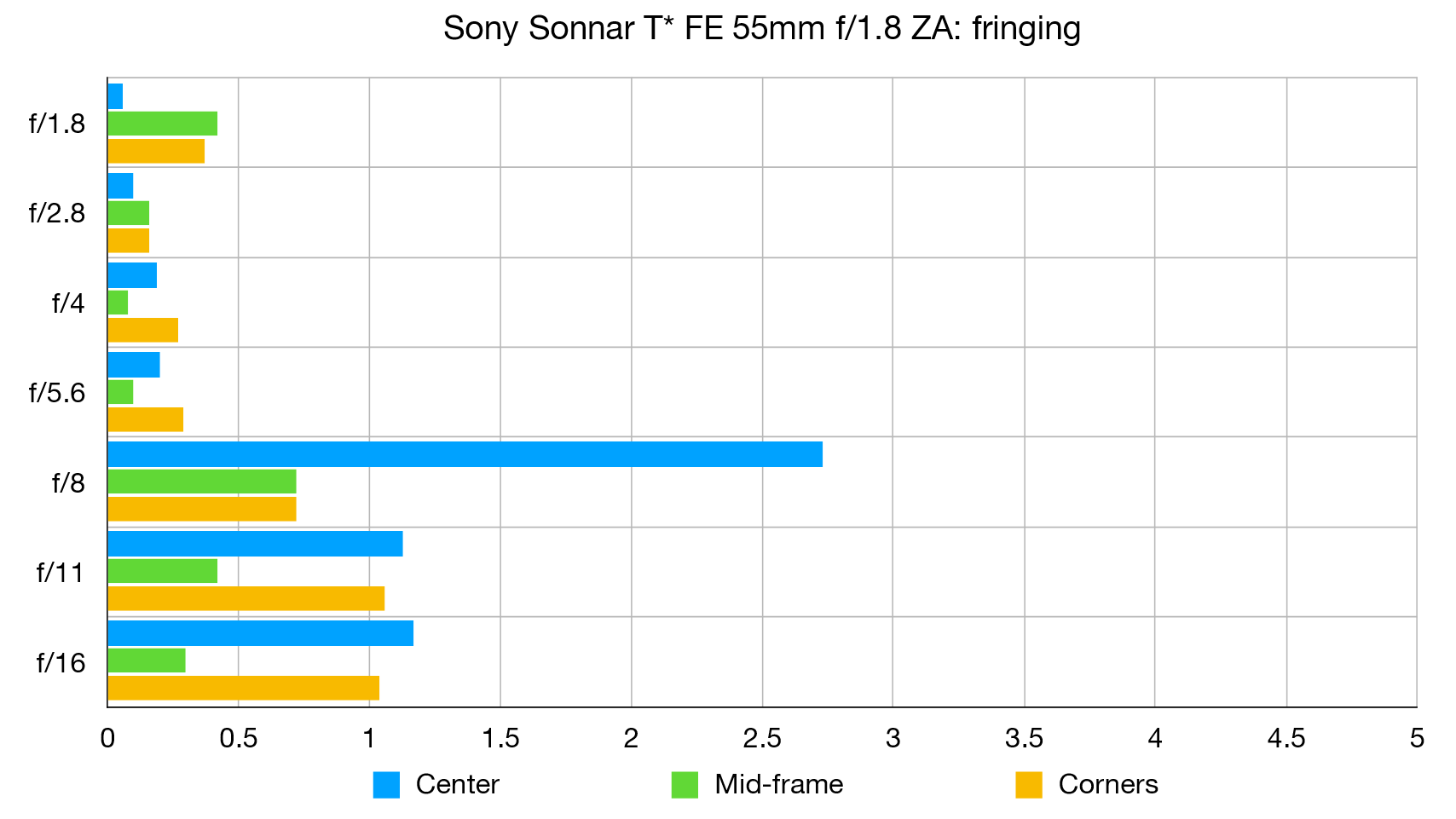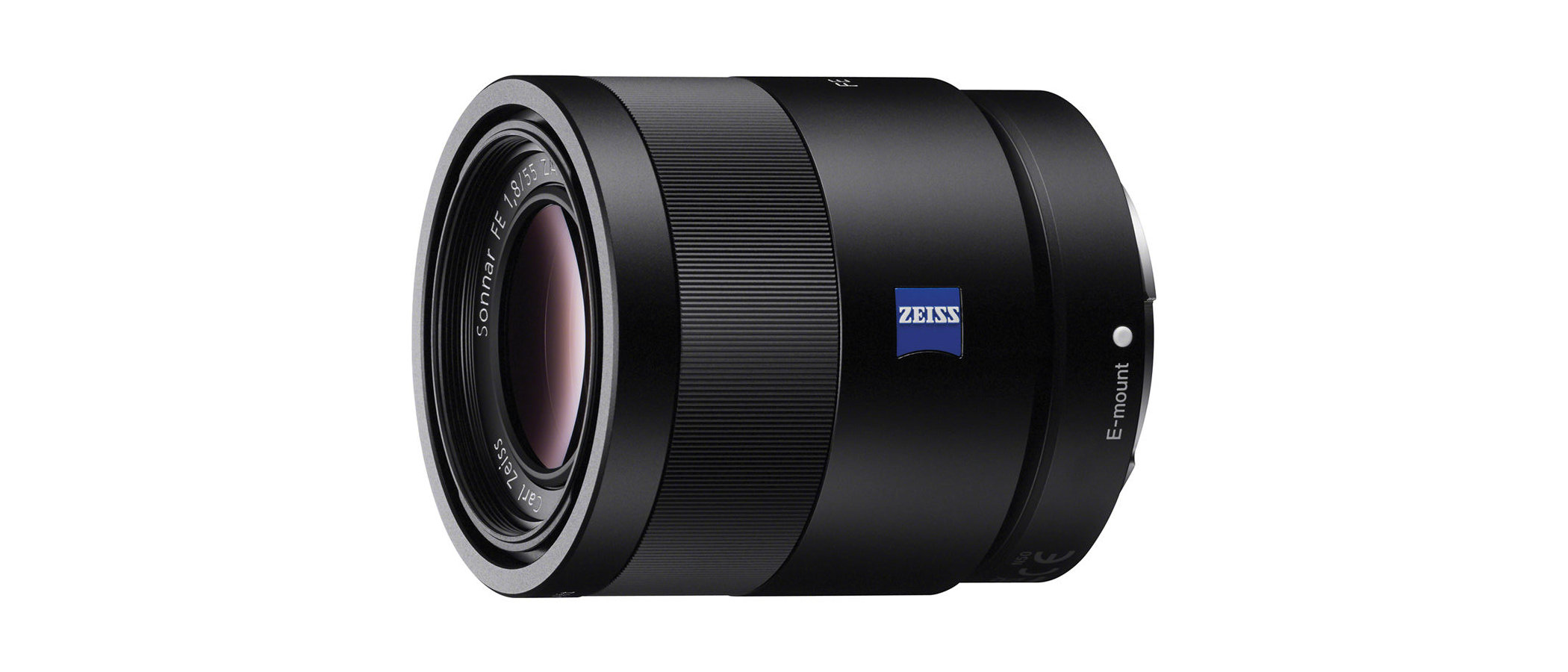Digital Camera World Verdict
The focal length and aperture rating of this lens makes it ideal for general and environmental portraiture on full-frame cameras, and for tighter portraits on APS-C format bodies, where it has an effective focal length of 82.5mm. Based on classic Zeiss Sonnar design principles and featuring Zeiss’s legendary T* coating, image quality is gorgeous but the lens is pricey for an f/1.8 standard prime.
Pros
- +
Good sharpness and contrast
- +
Smooth bokeh
- +
Weather-sealed
Cons
- -
Pricey for an f/1.8 standard prime
Why you can trust Digital Camera World
The Sony Sonnar T* FE 55mm f/1.8 ZA has a fairly modest aperture rating compared with f/1.4 and f/1.2 standard primes. Even so, it has pro-grade build quality and excellent all-round performance, as reflected in the up-market purchase price. It’s also surprisingly lightweight at just 281g, making it a good match for both full-frame and APS-C format Sony mirrorless cameras.
Specifications
Mount: Sony E (FE)
Sony product code: SEL55F18Z
Full-frame: Yes
Autofocus: Yes
Stabilization: No
Lens construction: 7 elements in 5 groups
Angle of view: 43 degrees
Diaphragm blades: 9
Minimum aperture: f/22
Minimum focusing distance: 0.5m
Maximum magnification ratio: 0.14x
Filter size: 49mm
Dimensions: 64x71mm
Weight: 281g
Key features
With its Zeiss Sonnar background, this lens is based on seven elements arranged in five groups. These include one aspherical element and two double-sided aspherical elements, the overall aim being to minimize unwanted aberrations while enhancing sharpness across the whole image frame, as well as contrast. Zeiss T* coating is also on hand to further optimize color rendition and contrast, while combating ghosting and flare.
Although not overly ‘fast’, compared with f/1.4 and f/1.2 prime lenses, the optical design seeks to ensure smooth bokeh, while a well-rounded nine-blade aperture diaphragm helps to maintain the quality of bokeh when stopping down a little.
Autofocus is driven by a linear stepping moto which is fast for stills and enables smooth autofocus transitions when shooting video. The lens is compact and lightweight at just 281g, and features a 49mm filter attachment thread. As you’d expect at the price, it’s supplied complete with a hood.

Performance
As advertised, sharpness and contrast are generally excellent, although there’s a noticeable drop-off at the widest aperture. Bokeh is also impressively smooth and dreamy, despite the widest aperture not stretching beyond f/1.8. Color fringing is very minimal and there’s virtually no distortion. All in all, performance is excellent.
Lab results
We run a range of lab tests under controlled conditions, using the Imatest Master testing suite. Photos of test charts are taken across the range of apertures and zooms (where available), then analyzed for sharpness, distortion and chromatic aberrations.
We use Imatest SFR (spatial frequency response) charts and analysis software to plot lens resolution at the center of the image frame, corners and mid-point distances, across the range of aperture settings and, with zoom lenses, at four different focal lengths. The tests also measure distortion and color fringing (chromatic aberration).
Sharpness:

Levels of sharpness are mostly excellent, and highly impressive across the whole image from at apertures between f/4 and f/11. Sharpness drops off when shooting wide-open at f/1.8 but images still have plenty of bite.
Fringing:

Color fringing is negligible at apertures from f/1.8 to f/5.6, creeping up a little at f/8 and narrower apertures.
Distortion: 0.08
There’s just the merest touch of pincushion distortion which is virtually impossible to spot in real-world shooting.
Verdict
The focal length and aperture rating of this lens makes it ideal for general and environmental portraiture on full-frame cameras, and for tighter portraits on APS-C format bodies, where it has an effective focal length of 82.5mm. Based on classic Zeiss Sonnar design principles and featuring Zeiss’s legendary T* coating, image quality is gorgeous but the lens is pricey for an f/1.8 standard prime.
Read more:
• Best camera lenses to get
• Best Canon lenses
• Best Nikon lenses
• Best Sony lenses
Matthew Richards is a photographer and journalist who has spent years using and reviewing all manner of photo gear. He is Digital Camera World's principal lens reviewer – and has tested more primes and zooms than most people have had hot dinners!
His expertise with equipment doesn’t end there, though. He is also an encyclopedia when it comes to all manner of cameras, camera holsters and bags, flashguns, tripods and heads, printers, papers and inks, and just about anything imaging-related.
In an earlier life he was a broadcast engineer at the BBC, as well as a former editor of PC Guide.



